2 Standards, definitions and books T 15
2.1 Standards
Quality standards and references
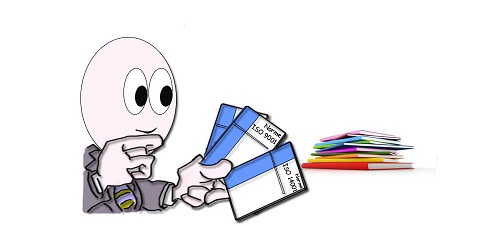
.jpg) The ISO 9000 family of standards contains three core booklets (and one guideline):
The ISO 9000 family of standards contains three core booklets (and one guideline):
- ISO 9000 (2015): Quality management systems. Fundamentals and vocabulary
- ISO 9001 (2015): Quality management systems. Requirements
- ISO/TS 9002 (2016): Quality management systems - Guidelines for the application of ISO 9001:2015
- ISO 9004 (2018): Quality management - Quality of an organization - Guidance to achieve sustained success
The new versions of ISO 9001 and ISO 9000 were published in September 2015.
The ISO 9000 standards are compatible with the other management systemset of processes allowing objectives to be achieved (see also ISO 9000, 3.5.3) standards (common vocabulary, process approachmanagement by the processes to better satisfy customers, improve the effectiveness of all processes and increase global efficiency (see also ISO 9001, 03), customer satisfactiontop priority objective of every management system (see also ISO 9000, 3.9.2), continual improvementprocess allowing the improvement of the global performance of the organization (see also ISO 9000, 3.3.2)). An added standard is:
ISO 19011: "Guidelines for auditing management systems " (2018).
ISO 14001 (2015 – third edition) is the standard related to the environment: "Environmental management systems - requirements with guidance for use". The new version was published in September 2015.
IATF 16949 (2016 is the standard for automotive manufacturers: "Requirements for automotive production and relevant service part organizations".
ISO 31000 (2018) "Risk management - Guidelines" establishes the principles and risk management process, risk assessment and risk treatment.
The standards of the ISO 10001 to ISO 10019 series are guidelines for quality management systemsset of processes allowing the achievement of the quality objectives (see also ISO 9000, 3.5.4) and will help you find many answers (cf. ISO 9001: 2015, Annex B).
All of these standards and many more can be ordered in electronic or paper form on the ISO site.
More than 28,000 standards (in English and other languages) are available for free on the Public.Resource.Org site.
The Oxebridge Q001 is a user-friendly, open source remix of ISO 9001:2015.
2.2 Definitions
Terms and definitions related to quality

The beginning of wisdom is the definition of terms. Socrates
Specific qualityaptitude to fulfill requirements (see also ISO 9000, 3.6.2) terms:
Competence: personal skills, knowledge and experiences
Conformity: fulfillment of a specified requirement
Corrective action: action to eliminate the causes of nonconformity or any other undesirable event and to prevent their recurrence
Customer: anyone who receives a product
Customer satisfaction: top priority objective of every quality management system related to the satisfaction of customer requirements
Documented information: any support allowing the treatment of information
Effectiveness: capacity to realize planned activities with minimum effort
Efficiency: financial relationship between achieved results and used resources
External provider (supplier): an entity that provides a product
Indicator: value of a parameter, associated with an objective, allowing the objective measure of its effectiveness
Management system: set of processes allowing objectives to be achieved
Nonconformity: fnon-fulfillment of a specified requirement
Organization (company): a structure that satisfies a need
Process: activities that ransform inputs into outputs
Product (or service): every result of a process or activity
Quality: aptitude to fulfill requirements
Quality management: activities allowing the control of an organization with regard to quality
Quality objective: related to quality, measurable goal that must be achieved
Requirement: explicit or implicit need or expectation
Risk: likelihood of occurrence of a threat or an opportunity
Stakeholder: person, group or company that ca affect or be affected by an organization
Top management: group or persons in charge of the company's control at the highest level
In the terminology of quality management systems, do not confuse:
- accident and incident
- an accident is an unexpected serious event
- an incident is an event that can lead to an accident
- anomaly, defect, dysfunction, failure, nonconformity, reject and waste:
- anomaly is a deviation from what is expected
- defect is the non-fulfillment of a requirement related to an intended use
- dysfunction is a degraded function that can lead to a failure
- failure is when a function has become unfit
- nonconformity is the non-fulfillment of a requirement in production
- reject is a nonconforming product that will be destroyed
- waste is when there are added costs but no value
- audit program and plan
- an audit program is the annual planning of the audits
- an audit plan is the description of the audit activities
- audit, inspection, auditee and auditor
- an audit is the process of obtaining audit evidence
- an inspection is the conformity verification of a process and product
- an auditee is the one who is audited
- an auditor is the one who conducts the audit
- control and optimize
- control is meeting the objectives
- optimize is searching for the best possible results
- customer, external provider and subcontractor
- a customer receives a product
- an external provider provides a service or a product
- a subcontractor provides a product or service on which specific work is done
- effectiveness and efficiency
- effectiveness is the level of achievement of planned results
- efficiency is the ratio between results and resources
- follow-up and review
- follow-up is the verification of the obtained results of an action
- review is the analysis of the effectiveness in achieving objectives
- inform and communicate
- to inform is to give someone meaningful data
- to communicate is to pass on a message, to listen to the reaction and discuss
- objective and indicator
- an objective is a sought after commitment
- an indicator is the information on the difference between the pre-set objective and the achieved result
- organization and enterprise, society, company
- organization is the term used by the ISO 9001 standard as the entity between the supplier and the customer
- an enterprise, society and company are examples of organizations
- process, procedure, product, activity and task
- a process is how we satisfy the customer using people to achieve the objectives
- a procedure is the description of how we should conform to the rules
- a product is the result of a process
- an activity is a set of tasks
- a task is a sequence of simple operations
Remark 1: the use of ISO 9000 definitions is recommended. The most important thing is to determinate a common and unequivocal vocabulary for everyone in the company.
Remark 2: the customer can also be the user, the beneficiary, the trigger, the ordering party, the consumer.
Remark 3: documented information is any information that we must maintain (procedure .gif) ) or retain (record
) or retain (record .gif) )
)
For other definitions, comments, explanations and interpretations that you don’t find in this module and annex 06, you can consult: .jpg)

- ISO Online Browsing platform (OBP)
- IEC Electropedia
- ISO 9000: 2015 - Quality management systems. Fundamentals and vocabulary, (2015)
2.3 Books
Books related to quality
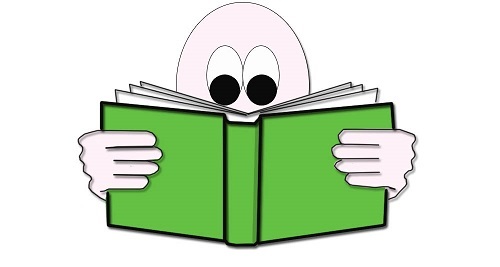
.jpg) Books for further reading on qualityaptitude to fulfill requirements (see also ISO 9000, 3.6.2):
Books for further reading on qualityaptitude to fulfill requirements (see also ISO 9000, 3.6.2):
.jpg) Philip Crosby, Quality is free; the Art of Making Quality Certain, McGraw-Hill, 1979
Philip Crosby, Quality is free; the Art of Making Quality Certain, McGraw-Hill, 1979- Joseph Juran, Management of Quality, McGraw-Hill, 1981
.jpg) Kaoru Ishikawa, What is Total Quality Control, The Japanese Way, Prentice-Hall, 1981
Kaoru Ishikawa, What is Total Quality Control, The Japanese Way, Prentice-Hall, 1981.jpg) Edwards Deming, Out of the Crisis, MIT Press, 1982
Edwards Deming, Out of the Crisis, MIT Press, 1982(1).jpg) Eliyahu Goldratt, Jeff Cox, The Goal, A Process of Ongoing Improvement, North River Press, 1984
Eliyahu Goldratt, Jeff Cox, The Goal, A Process of Ongoing Improvement, North River Press, 1984.jpg) Masaaki Imai, KAIZEN, The Key to Japan’s Competitive Success, McGraw-Hill, 1986
Masaaki Imai, KAIZEN, The Key to Japan’s Competitive Success, McGraw-Hill, 1986(1).jpg) James Harrington, Poor-Quality Cost, Dekker, 1987
James Harrington, Poor-Quality Cost, Dekker, 1987(2).jpg) Larry Webber, Michael Wallace, Quality Control for Dummies, Wiley, 2007
Larry Webber, Michael Wallace, Quality Control for Dummies, Wiley, 2007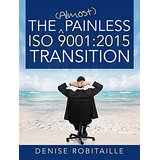 Denise Robitaille, The (Almost) Painless ISO 9001:2015 Transition, Paton Professional, 2015
Denise Robitaille, The (Almost) Painless ISO 9001:2015 Transition, Paton Professional, 2015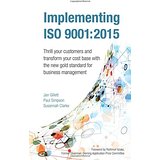 Jan Gillet, Implementing Iso 9001:2015: Thrill your customers and transform your cost base with the new gold standard for business management, Infinite Ideas, 2015
Jan Gillet, Implementing Iso 9001:2015: Thrill your customers and transform your cost base with the new gold standard for business management, Infinite Ideas, 2015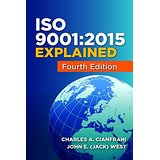 Charles Cianfrani, John West, ISO 9001:2015 Explained, ASQ Quality Press, 2015
Charles Cianfrani, John West, ISO 9001:2015 Explained, ASQ Quality Press, 2015 Denise Robitaille, ISO 9001:2015 Handbook for Small and Medium-Sized Businesses, Quality Press, 2016
Denise Robitaille, ISO 9001:2015 Handbook for Small and Medium-Sized Businesses, Quality Press, 2016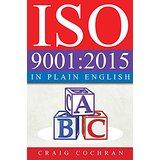 Craig Cochran, ISO 9001:2015 in Plain English, Paton Professional, 2015
Craig Cochran, ISO 9001:2015 in Plain English, Paton Professional, 2015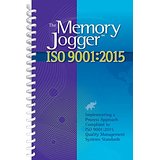 Jeremy Hazel, José Dominguez, Jim Collins, Memory Jogger ISO 9001:2015: What Is It? How Do I Do It? Tools and Techniques to Achieve It, Goal/QPC, 2016
Jeremy Hazel, José Dominguez, Jim Collins, Memory Jogger ISO 9001:2015: What Is It? How Do I Do It? Tools and Techniques to Achieve It, Goal/QPC, 2016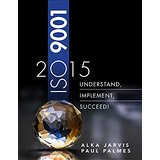 Alka Jarvis, Paul Palmes, ISO 9001: 2015: Understand, Implement, Succeed!, Prentice hall, 2016
Alka Jarvis, Paul Palmes, ISO 9001: 2015: Understand, Implement, Succeed!, Prentice hall, 2016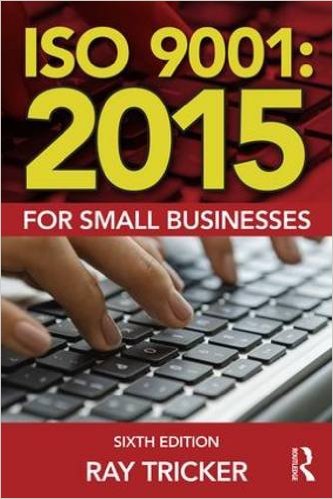 Ray Tricker, ISO 9001:2015 for Small Businesses, Routledge, 2016
Ray Tricker, ISO 9001:2015 for Small Businesses, Routledge, 2016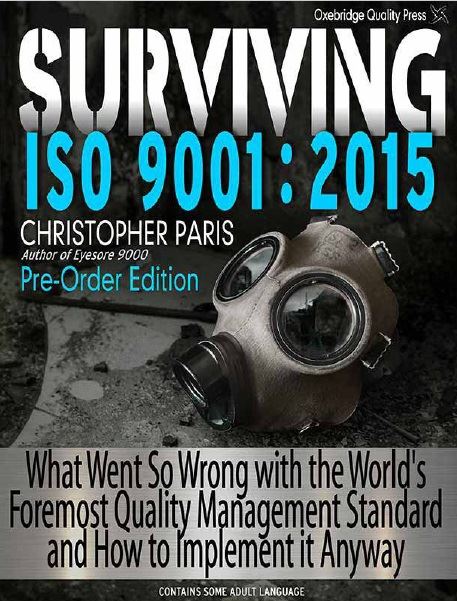 Christopher Paris, Surviving ISO 9001: 2015, Oxebridge Quality Press, 2016
Christopher Paris, Surviving ISO 9001: 2015, Oxebridge Quality Press, 2016
.jpg) Minute of relaxation. Game: Procedure
Minute of relaxation. Game: Procedure
When I think of all the books still left for me to read, I am certain of further happiness. Jules Renard
